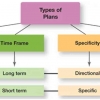The university website usually displays the courses offered every semester, with a brief yet clear description. From this research you may find some that fit your passion and interest. When you have, start the application process.
You will also find a list of the professors in that programme/university. Read some of their research papers, find the one(s) that share(s) the same interest with you and write them! They might be able to help you find a scholarship.
Another useful advise is that you may want to apply for more than one universities. If you miss one, you have another chance at the other university.
- Understanding the questions
You have now chosen the programme(s) and the university(ies) you would like to enroll in. The next step is to start the application process, including writing your personal statement. For some of us, it might be burdensome. But trust me, it is not as scary as you may have thought!
Before you start writing your personal statement, I would strongly suggest you to read the questions or requirement thoroughly and understand what the university or scholarship body is looking for (usually they state it pretty clearly on their website or application form). You may not want to apply for a scholarship aiming for future engineers if your passion is in linguistics.
Let’s take a look on the question from Fulbright scholarship application:
“As part of the evaluation of your application, you are required to attach a one page (please do not exceed the 1 page limit) of a clear and detailed description of your study objectives. Give your reason for wanting to pursue them in the U.S. Describe the kind of program you expect to undertake, and explain how your proposed field of study fits in with your educational background, your professional background, your future objectives, and your future involvement in community development. Please type, do not write.”
There are a few points we need to pay attention to the questions/requirement:
- Do not exceed the 1-page limit. In some other cases you may find 1000-word limit. Ideally, if it says you should not write more than 1000 words, do not assume that you can write far less than 1000 words. 990 words should be okay.
- The main things you need to explain in your personal statement: reason for wanting to pursue your study in the US, the programme you expect to undertake and how your field of study fits in your educational and professional background and your contribution to community after you have finished the study. In your essay/personal statement, they do not have to appear in the order like that. Just make sure your essay is coherent.
- Different scholarship may have different questions to answer. Make sure your personal statement covers your past (background), present (current job/experience) and future plans.
When writing your personal statement, make sure you only explain your relevant experience or background. In some other examples, the university would ask why you are interested in studying there. Why did you choose the programme? How would it help you pursue your future career? Be sure that you can explain it clearly.
- Making the draft (and START WRITING !!!)
A draft will significantly help you write a good essay or personal statement. This is how I usually make a draft:
1st paragraph: introduction, including the attention grabber. The first few lines should attract the audience’ attention and make them eager to read more. The hook or attention grabber may include: a personal story (childhood or past experience), a rhetorical question, a quotation or your inspiration that is related to the field of study you have choosen.











